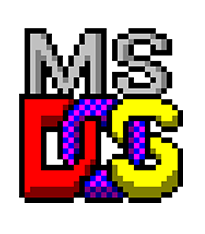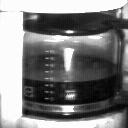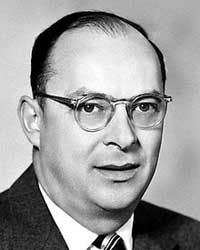Computer history - 1991
Major computer events in 1991

The World Wide Web and the first web page were launched on August 6, 1991 by Tim Berners-Lee, a scientist at the CERN European Partial Physics Laboratory in Geneva, Switzerland.
Linus Torvalds introduced Linux and the Linux kernel on August 25, 1991.
The first Unicode standard was published in October 1991.
1991 computer and technology top terms
The following are some top computer and technology-related terms in alphabetical order that were introduced or popularized in 1991.
- HTML (hypertext markup language)
- World Wide Web
New computer products and services introduced in 1991
AMD introduced the AM386 microprocessor family in March 1991.
Commodore released the CDTV (Commodore Dynamic Total Vision) in March 1991.
Intel introduced the Intel 486SX chip in April to help bring a lower-cost processor to the PC (personal computer) market, selling for $258.00.
Microsoft released Visual Basic in May 1991.
Apple introduced System 7 operating system on May 13, 1991.

Microsoft released Word 2.0 for PC, and version 5 for Mac in 1991.
MS-DOS 5.0 was released in June 1991.
Adobe Photoshop 2.0 was released in June 1991.
Apple released the PowerBook in October 1991.
Apple QuickTime was introduced on December 2, 1991.
Python was released in 1991.
HTTP/0.9 was introduced in 1991.
IBM pioneers first used MR (magnetoresistive) heads for disk drives with the 1 GB (gigabyte) 3.5-inch drive, which provided the highest areal density available at that time. The gigabyte drive set the stage for rapid increases in hard drive density.
IBM unveiled a new operating system software - AIX/ESA (Advanced Interactive Executive/Enterprise System Architecture) - for the System/390 family.
IBM released the IBM 9075 PCradio, a battery-powered personal computer for mobile workers to get information, order parts, and update customer records via radio, cellular, or telephone.
IBM introduced the IBM Personal System/2 L40 SX laptop computer. The 7.7 pound unit features a full-sized keyboard, 10-inch display screen, and a high-capacity disk drive.
Symantec released Norton antivirus software.
Dolby introduced AC-3.
The programming language FORTRAN (Formula Translation) 90 was created in 1991.
The DLT (digital linear tape) tape drive was released as a reliable, high-speed, and high-capacity tape drive solution.
The EPP (enhanced parallel port) was developed by Intel, Xircom, and Zenith Data Systems.
TrueType, a scalable font, was introduced and developed by Microsoft, and Apple began being used on all Apple computers and Windows computers.
Gopher was introduced in 1991.
VSE/ESA was introduced in 1991.
Computer and technology-related events in 1991
NSF (National Science Foundation) opened the Internet to commercial use.

The first widely-publicized webcam was the XCoffee, also known as the Trojan Room coffee pot. The camera began operating in 1991 with the help of Quentin Stafford-Fraser and Paul Jardetzky.
The term Internet of Things was coined.
The Lower Lights BBS (bulletin board system) was a chat-oriented BBS in Utah that came online on February 15, 1991.
Pretty Good Privacy, commonly known as PGP (pretty good privacy), a public key used for encryption, was released as Freeware by Philip Zimmerman.
Developed by IBM, Motorola, and Apple in 1991, the PowerPC processor for the Apple Power Mac was introduced and later included in the Power Mac.
Following its decision not to develop operating systems cooperatively with IBM, Microsoft changed the name of OS/2 to Windows NT.
Creative Labs released a multimedia upgrade kit that includes a CD-ROM (compact disc read-only memory) drive, the SoundBlaster Pro sound card, a MIDI (musical instrument digital interface) kit, and various software applications. The kit allows IBM-compatible computers to obtain all the tools needed to meet the MPC (Multimedia Personal Computer) standards.
2G cellular phone technology was established under the GSM (Global System for Mobile communication) standard in 1991.
The computer Monkey virus was first discovered in Edmonton, Canada, in 1991.
The Sega Genesis game "Zero Wing" was introduced. The phrase "All your base are belong to us" became a popular saying for computer gamers and geeks.
Cell phone Lithium batteries began being recalled in Japan after the phone exploded and burned a man's face during use.
IDEA (International Data Encryption Algorithm) was first expressed by Xuejia Lai and James Massey in 1991.
The London Science Museum completed the Difference Engine No. 2 for the bicentennial year of Charles Babbage's birth in June 1991.
The first Cybercafe opened in July 1991 in San Francisco.
The Extended Video Graphics Array digital video standard was created by VESA (Video Electronics Standard Association) in 1991.
The analogy of "surfing the Internet" may have its origins in a comic book published in October 1991 by CERFnet, an early ISP ((Internet service provider).
The United States military introduced the DART (Dynamic Analysis and Replanning Tool).
On December 1, 1991, the first web server outside of Europe came online, and the first website was introduced in 1991.
U.S. President George Bush presented a 1991 National Medal of Technology to IBM scientist John Cocke, who invented RISC (reduced instruction set computing) technology.
The 20 MB PCMCIA SunDisk and the first SSD (solid-state drive) was released for around $1,000 in 1991.
The computer book DOS for Dummies by Dan Gookin was published in 1991 and became an instant classic.
The first external computer speaker was invented by Abinawan Puracchidas in 1991.
The first version of the Windows Media Player was released in 1991.
The yotta and zetta prefixes were added as an SI (Systems of Units) in 1991.
Computer companies and organizations founded in 1991
id Software was founded on February 1, 1991, and released its first game, Commander Keen.
Silicon & Synapse, which became Blizzard, was founded on February 8, 1991.
Following the sale of IBM's typewriter and keyboard business to Clayton & Dubilier, Inc., Lexmark was formed in March 1991. IBM had a 10 percent equity interest in the new company and would market many of its products.
Bungie was founded on May 7, 1991.
Advanced Logic Industries was founded in 1991.
Apache Micro Peripherals was founded in 1991.
AVG was founded in 1991.
Broadcom was founded in 1991.
BSDi (Berkeley Software Design, Inc.) was founded in 1991 by some leading CSRG computer scientists.
Dr Gerpheide, with James O'Callaghan, founded Circque in 1991, which commercialized the touchpad.
Cmedia was founded in 1991.
Caldera was founded in 1991.
Cyren was founded in 1991 by Gideon Mantel and Nahum Sharfman.
Dynatron was founded in 1991.
Epic Games was established in 1991.
Fujitsu Computer Products of America was founded in 1991.
HiSilicon was founded in 1991.
Intertex Electronics was founded in 1991.
IONA was founded in 1991.
Jetta was founded in 1991.
The reformed Mindscape company became operational in 1991.
Networth was founded in 1991.
Targa was established in 1991.
VoodooPC was founded in 1991.
Computer company events in 1991
Gary Kildall and other shareholders of DRI (Digital Research Inc.) sell all private shares to Novell.
Internet domains that came online in 1991

The domain microsoft.com came online on May 2, 1991.
Computer-related TV shows and movies released in 1991
The movie Terminator 2 was released in the U.S. on July 1, 1991.
Computer pioneer deaths in 1991

John Bardeen passed away on January 30, 1991 (Age: 82).
Derrick Lehmer passed away on May 22, 1991 (Age: 86).
Saul Rosen passed away on June 9, 1991 (Age: 69).
